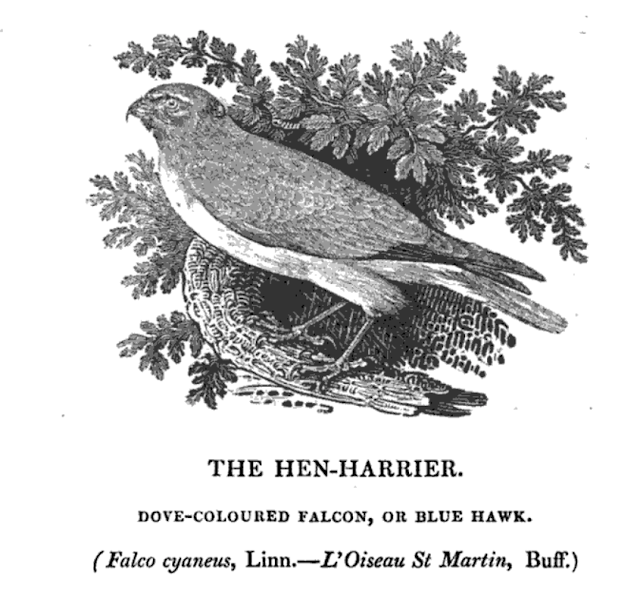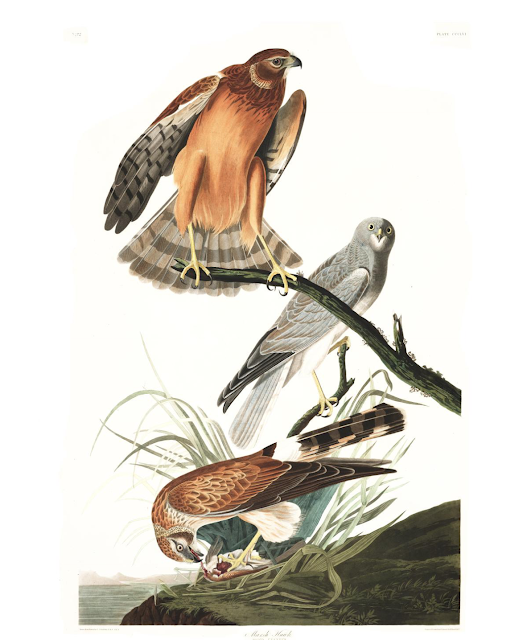This is a bird that came back from extinction. Hen harriers became extinct in mainland Britain in the nineteenth century, mainly as a result of human persecution. They recolonised the mainland after the Second World War from populations in the Hebrides and Orkney Islands. The male hen harrier is a beautiful silvery grey bird, known as the grey ghost. Females and juveniles are similar in appearance, both having a very distinctive white rump giving the nickname of ringtail. This bird is a juvenile which is overwintering near Druridge Bay.
The hen harrier flies low and slow along field margins and over rough grass searching for its prey.
The harrier's move to the marshes for the winter doesn't always go unchallenged. Here is a very distant shot of the harrier being chased by a female kestrel.
In Thomas Bewick's day there was still uncertainty about classification about some birds, particularly birds of prey. He listed the Ringtail separately from the Hen-Harrier but then noted that a ringtail was a female hen harrier. The engravings are from A History of British Birds (1797).
200 years ago hen harriers were nesting not far from here, at Craglake (now Crag Lough) on the Roman Wall.
The hen harrier is now Circus cyaneus. Circus comes from the Greek word Kirkos meaning circle, perhaps as in ringtail(?) although Wikipedia says it refers to its circling flight.
This is Archibald Thorburn's painting of male and female hen harriers.
The same bird is known in North America as the northern harrier. It was painted by John James Audubon, who knew it as the marsh hawk (not to be confused with our marsh harrier).
The hen harrier is a rare bird and is the most persecuted bird in Britain. It is on the red list but still suffers from illegal persecution by gamekeepers on grouse moors. The breeding population is tiny, and mostly on upland areas in Scotland and Wales. The birds are more widely distributed in winter with the population boosted by winter visitors.
The hen harrier is a rare bird and is the most persecuted bird in Britain. It is on the red list but still suffers from illegal persecution by gamekeepers on grouse moors. The breeding population is tiny, and mostly on upland areas in Scotland and Wales. The birds are more widely distributed in winter with the population boosted by winter visitors.
You can read more about influences on the hen harrier population here. The Langholm Moor Demonstration Project is a 10-year programme designed to show whether and how it is possible to manage the moor in such a way as to produce a combination of good habitat, a population of breeding hen harriers in line with its SPA status, and economically viable driven red grouse shooting. You can read about it here. And watch a BTO video on grey harrier identification here. Listen to Chris Packham's BBC Radio 4 Tweet of the Day on hen harrier here.



















I'd missed this one Chris. The report of the Langholm Moor Demonstration Project makes, in some ways, sorry reading. I only hope the commercial interests of shooting don't outweigh the conservation gains!
ReplyDelete